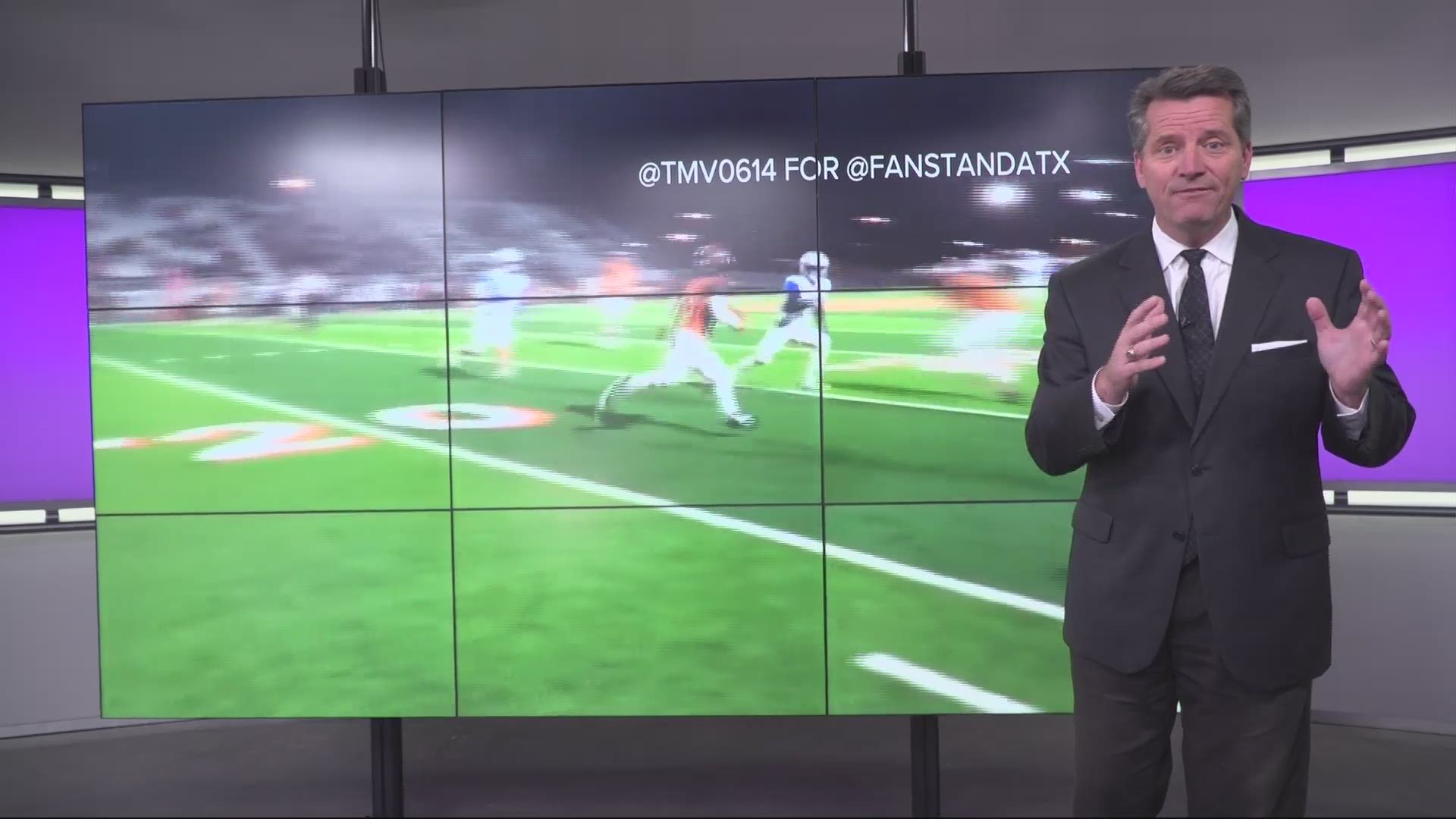A hit in the Hutto vs. McCallum game has gone viral and has the internet talking. Was the hit dirty or clean? There are two things to look at when you watch the viral video of the play. You need to watch the helmet of the offensive player that made the hit and the defensive player.
A huge block by Hutto wide receiver DJ Baptist was caught on camera and has gone viral on social media. Today, we're talking with the girl who caught it all on tape. https://bit.ly/2PH5i6n
Posted by KVUE on Monday, 19 November 2018
Watch to see if the helmet of the defensive player was targeted by the offensive player. You also need to see if either helmet was used incorrectly.
The player who makes the block seems to be using his shoulder. He doesn't go to the head and doesn't go below the waist.
NCAA rule regarding blocking below the waist:
ARTICLE 2. a. A block below the waist is a block in which the force of the initial contact is below the waist of an opponent who has one or both feet on the ground. When in question, the contact is below the waist (Rule 9-1-6).
b. A blocker who makes contact above the waist and then slides below the waist has not blocked below the waist. If the blocker first contacts the opposing player’s hands at he waist or above, it is a legal “above the waist’’ block (Rule 9-1-6).
In the video you will also notice the offensive player doesn't go for the defensive player's back.
NCAA rule regarding “clipping” or blocking in the back:
ARTICLE 4. a. A block in the back is contact against an opponent occurring when the force of the initial contact is from behind and above the waist.
When in question, the contact is at or below below the waist (see Clipping, Rule 2-5) (Rule 9-3-6) (A.R. 9-3-3-I-VII and A.R. 10-2-2-XII).
b. The position of the blocker’s head or feet does not necessarily indicate the
point of initial contact.
The defensive player who is trying to make a tackle on the player carrying the ball gets hit in the shoulder area. It is a violent hit, but the block doesn't seem to be aimed for the head.
NCAA rules regarding targeting:
ARTICLE 4. No player shall target and make forcible contact to the head or neck area of a defenseless opponent (See Note 2 below) with the helmet, forearm, hand, fist, elbow or shoulder. This foul requires that there be at least one indicator of targeting (See Note 1below).
When in question, it is a foul (Rules 2-27-14 and 9-6). (A.R. 9-1-4-I-VI)
Note 1: “Targeting” means that a player takes aim at an opponent for purposes of attacking with forcible contact that goes beyond making a legal tackle or a legal block or playing the ball. Some indicators of targeting include but are not limited to:
• Launch—a player leaving his feet to attack an opponent by an
upward and forward thrust of the body to make forcible contact in
the head or neck area
• A crouch followed by an upward and forward thrust to attack with
forcible contact at the head or neck area, even though one or both feet
are still on the ground
• Leading with helmet, shoulder, forearm, fist, hand or elbow to attack
with forcible contact at the head or neck area
• Lowering the head before attacking by initiating forcible contact with
the crown of the helmet
Note 2: Defenseless player (Rule 2-27-14).
Examples of defenseless players include but are not limited to
• A player in the act of or just after throwing a pass.
• A receiver attempting to catch a forward pass or in position to receive
a backward pass, or one who has completed a catch and has not had
time to protect himself or has not clearly become a ball carrier.
• A kicker in the act of or just after kicking a ball, or during the kick or
the return.
• A kick returner attempting to catch or recover a kick, or one who has
completed a catch or recovery and has not had time to protect himself
or has not clearly become a ball carrier.
• A player on the ground.
• A player obviously out of the play.
• A player who receives a blind-side block.
• A ball carrier already in the grasp of an opponent and whose forward
progress has been stopped.
• A quarterback any time after a change of possession.
All levels of football including pro, college and high school have worked to eliminate "crack back" blocks.
- Players outside the tackle box at the snap, any time after the snap or in motion at the snap may not block below the waist toward the original position of the ball at the snap.
- Once the ball has left the tackle box a player may not block below the waist toward his own end line.
There is no blocking below the waist in the video and the offensive blocker was close to going horizontal with the field, blocking a player who was close to making a tackle.
Some officials may have called this, but most would probably let it go.

